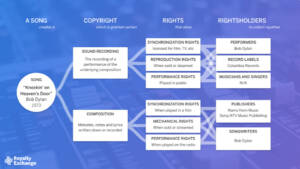How to Get Your Music Featured on Spotify Playlists

Understanding Spotify Playlists
The importance of Spotify playlists
Spotify playlists have become a crucial platform for musicians to gain exposure and reach a wider audience. With millions of users actively listening to playlists curated by Spotify, getting your music featured on these playlists can significantly boost your visibility and increase your chances of success. Being included in a popular playlist can lead to increased streams, followers, and ultimately, more opportunities for your music to be discovered. Additionally, being featured on Spotify playlists can also attract the attention of industry professionals, such as record labels and music supervisors, who often use these playlists as a resource for finding new talent. Therefore, it is essential for artists to understand the importance of Spotify playlists and actively work towards getting their music featured on them.
Different types of Spotify playlists
There are several different types of Spotify playlists that you can aim to get your music featured on. One type is the editorial playlists, which are curated by Spotify’s in-house team of music experts. These playlists often have a large number of followers and can provide a significant boost to your exposure. Another type is the algorithmic playlists, which are generated by Spotify’s algorithms based on user listening habits and preferences. These playlists can be a great way to reach new listeners who have similar tastes to your music. Additionally, there are also user-generated playlists, which are created by Spotify users themselves. These playlists can range from niche genres to popular themes and can be a valuable way to connect with specific communities or target audiences. By understanding the different types of Spotify playlists, you can tailor your approach and increase your chances of getting your music featured.
How Spotify curates playlists
Spotify curates playlists using a combination of algorithms and human curation. The platform’s algorithms analyze various factors such as the popularity of a song, the number of streams it receives, and the engagement it generates from listeners. These algorithms also take into account the user’s listening habits and preferences to create personalized playlists. Additionally, Spotify employs a team of expert curators who manually review and select songs for their official playlists. These curators consider factors like the quality of the music, its relevance to the playlist theme, and the potential for discovery. By combining data-driven algorithms with human expertise, Spotify ensures that its playlists offer a diverse and engaging listening experience for its users.
Preparing Your Music for Spotify Playlists
Creating high-quality recordings
Creating high-quality recordings is essential for getting your music featured on Spotify playlists. The first step is to invest in good recording equipment, such as a high-quality microphone and audio interface. It’s also important to find a quiet and acoustically treated space to record in, as background noise and poor room acoustics can negatively impact the quality of your recordings. Additionally, make sure to use proper recording techniques and pay attention to details like mic placement and levels. Taking the time to produce clean and professional-sounding recordings will greatly increase your chances of catching the attention of Spotify playlist curators.
Optimizing your tracks for streaming
Optimizing your tracks for streaming is crucial in order to increase your chances of getting featured on Spotify playlists. One important aspect to consider is the overall sound quality of your music. Make sure your tracks are professionally mixed and mastered to ensure they sound their best when streamed. Additionally, it’s important to pay attention to the length of your tracks. Spotify playlists often favor shorter songs, so consider editing your tracks to be more concise and impactful. Another factor to consider is the intro of your songs. Spotify playlists often have a short window of time to capture listeners’ attention, so having a strong and engaging intro can make a big difference. Lastly, make sure your tracks have eye-catching and descriptive titles, as well as high-quality album artwork. These elements can help your music stand out and attract the attention of playlist curators and listeners alike.
Choosing the right genre and mood
When it comes to getting your music featured on Spotify playlists, choosing the right genre and mood is crucial. Spotify playlists are curated based on specific themes, genres, and moods, so it’s important to align your music with the appropriate category. Take some time to research popular playlists within your genre and analyze the mood and style of the songs featured. This will give you a better understanding of the type of music that resonates with Spotify users and increase your chances of getting your music featured. Additionally, consider the mood and vibe of your own music and make sure it fits well within the chosen genre. By selecting the right genre and mood, you’ll be able to target the right audience and increase your chances of getting noticed on Spotify playlists.
Building a Strong Spotify Profile
Creating an engaging artist bio
Creating an engaging artist bio is crucial for getting your music featured on Spotify playlists. Your artist bio is the first impression that potential listeners and playlist curators will have of you, so it’s important to make it compelling and unique. Start by introducing yourself and your music style, highlighting any notable achievements or experiences you have had in the industry. Be sure to include any interesting or personal anecdotes that help to showcase your personality and passion for music. Keep your bio concise and easy to read, using language that reflects your brand and target audience. Remember to update your bio regularly to reflect any new releases or accomplishments, and don’t be afraid to show some personality and creativity to stand out from the crowd. A well-crafted artist bio can greatly increase your chances of catching the attention of playlist curators and ultimately getting your music featured on Spotify playlists.
Choosing eye-catching profile and cover images
When it comes to choosing eye-catching profile and cover images for your Spotify artist profile, it’s important to consider the overall aesthetic and branding of your music. Your profile image should be a clear and high-quality representation of yourself or your band, as it will be the first thing that potential listeners see when they come across your music. It’s a good idea to use a professional photo or a well-designed logo that reflects your musical style. Additionally, your cover image should be visually appealing and relevant to your music. It can be a creative artwork, a concert photo, or a visually striking image that captures the essence of your sound. Remember, these images are your first chance to make a strong impression, so make sure they are visually captivating and aligned with your music’s identity.
Promoting your Spotify profile on social media
Promoting your Spotify profile on social media is a crucial step in getting your music featured on Spotify playlists. By leveraging the power of platforms like Facebook, Instagram, Twitter, and TikTok, you can reach a wider audience and attract more followers to your Spotify profile. Start by creating engaging content related to your music, such as behind-the-scenes footage, live performances, or sneak peeks of upcoming releases. Use catchy captions and hashtags to increase visibility and encourage users to check out your Spotify profile. Additionally, collaborate with influencers or other artists in your genre to cross-promote each other’s music and gain exposure to their fanbase. Remember to engage with your followers by responding to comments, messages, and sharing user-generated content. The more active and interactive you are on social media, the more likely you are to attract attention from Spotify curators and increase your chances of getting featured on playlists.
Networking with Spotify Playlist Curators
Researching and identifying relevant curators
Researching and identifying relevant curators is an essential step in getting your music featured on Spotify playlists. Start by exploring different genres and sub-genres that align with your music style. Look for playlists that have a similar vibe or sound to your music. Pay attention to the number of followers and engagement of these playlists to ensure they have an active and engaged audience. Additionally, consider reaching out to independent curators or bloggers who have a strong presence in the music industry. Building relationships with these curators can increase your chances of getting your music featured on their playlists. Remember to personalize your outreach and provide them with a compelling reason why your music would be a great fit for their playlists. Researching and identifying relevant curators requires time and effort, but it is a crucial step in gaining exposure for your music on Spotify.
Building genuine relationships with curators
Building genuine relationships with curators is crucial for getting your music featured on Spotify playlists. Curators are the gatekeepers who decide which songs make it onto their playlists, so it’s important to establish a genuine connection with them. Start by researching the curators who create playlists in your genre or niche. Follow them on social media, engage with their content, and show genuine interest in their work. Building a relationship takes time, so be patient and consistent in your efforts. Once you’ve established a connection, reach out to them with a personalized message introducing yourself and your music. Avoid generic copy-paste messages and instead, tailor your approach to each curator. Offer to collaborate or provide them with exclusive content. By building genuine relationships with curators, you increase your chances of getting your music featured on Spotify playlists.
Pitching your music effectively
Pitching your music effectively is crucial in order to increase your chances of getting featured on Spotify playlists. Firstly, it is important to research and identify the right playlists that align with your music genre and target audience. This will ensure that your music reaches the right listeners who are more likely to engage with it. Once you have identified the relevant playlists, personalize your pitch by addressing the playlist curators by their name and showing genuine interest in their work. It is also essential to provide a concise and compelling description of your music, highlighting its unique qualities and why it would be a great fit for their playlist. Additionally, including any notable achievements or accolades can help to grab the curator’s attention. Finally, be professional, polite, and persistent in your follow-ups, as building relationships with playlist curators takes time and effort. By pitching your music effectively, you can significantly increase your chances of getting your music featured on Spotify playlists and reaching a wider audience.
Promoting Your Music to Gain Playlist Attention
Utilizing music blogs and online platforms
Utilizing music blogs and online platforms is another effective way to get your music featured on Spotify playlists. Music blogs and online platforms are popular among music enthusiasts and industry professionals, making them a great platform to showcase your music. By reaching out to music bloggers and submitting your music to online platforms, you increase your chances of getting noticed by Spotify playlist curators. It is important to research and find blogs and platforms that align with your music genre and target audience. Building relationships with bloggers and platform owners can also lead to future collaborations and opportunities for exposure. Additionally, some online platforms offer playlist submission services, where you can directly submit your music to playlist curators. Overall, utilizing music blogs and online platforms can significantly increase your chances of getting your music featured on Spotify playlists.
Engaging with your fanbase
Engaging with your fanbase is crucial for building a loyal and dedicated following. One effective way to engage with your fans is through social media platforms such as Instagram, Twitter, and Facebook. Regularly posting updates, behind-the-scenes content, and interacting with your fans through comments and direct messages can help create a sense of community and make your fans feel valued. Additionally, hosting live Q&A sessions, virtual concerts, or exclusive meet-and-greets can further strengthen the bond between you and your fanbase. It’s important to listen to your fans’ feedback, respond to their messages, and show appreciation for their support. By actively engaging with your fanbase, you can not only increase your chances of getting your music featured on Spotify playlists but also cultivate a dedicated fanbase that will support you throughout your music career.
Collaborating with other artists and influencers
Collaborating with other artists and influencers can greatly increase your chances of getting your music featured on Spotify playlists. By teaming up with other musicians who have a similar style or audience, you can tap into their fan base and gain exposure to a wider audience. Additionally, collaborating with influencers who have a large following on social media platforms can help you reach potential listeners who may not have discovered your music otherwise. Building relationships with other artists and influencers can also lead to opportunities for cross-promotion, where you can promote each other’s music to your respective fan bases. Overall, collaborating with other artists and influencers is a strategic way to expand your reach and increase your chances of getting your music featured on Spotify playlists.
Monitoring and Analyzing Playlist Performance
Using Spotify for Artists analytics
Using Spotify for Artists analytics is a crucial tool for musicians looking to get their music featured on Spotify playlists. This feature provides valuable insights into the performance of your music, including the number of streams, listeners, and followers. By analyzing this data, you can identify trends, understand your audience better, and make informed decisions on how to promote your music effectively. Additionally, Spotify for Artists analytics allows you to track the success of your promotional efforts and see which playlists are generating the most engagement. Armed with this information, you can tailor your approach and reach out to curators of popular playlists, increasing your chances of getting your music featured and reaching a wider audience.
Tracking playlist placements and listener engagement
Tracking playlist placements and listener engagement is crucial for any artist or musician looking to grow their presence on Spotify. By monitoring which playlists your music is featured on, you can gain valuable insights into the effectiveness of your promotional efforts and identify potential areas for improvement. Additionally, tracking listener engagement allows you to understand how your music is resonating with your audience and make informed decisions about future releases. There are various tools and platforms available that can help you track playlist placements and listener engagement, such as Spotify for Artists and third-party analytics services. Utilizing these resources can provide you with the data and information needed to optimize your Spotify strategy and reach a wider audience.
Adjusting your strategy based on data
Adjusting your strategy based on data is crucial for increasing your chances of getting your music featured on Spotify playlists. By analyzing the data provided by Spotify, such as the number of streams, listener demographics, and playlist placement, you can gain valuable insights into what is working and what isn’t. For example, if you notice that your music is performing well with a specific demographic or genre, you can tailor your promotional efforts towards targeting that audience. Additionally, if you find that your music is consistently being added to playlists but not generating a significant number of streams, you may need to reevaluate your approach and focus on creating more engaging and captivating music. Overall, data-driven decision making is essential for optimizing your strategy and increasing your chances of success on Spotify playlists.








